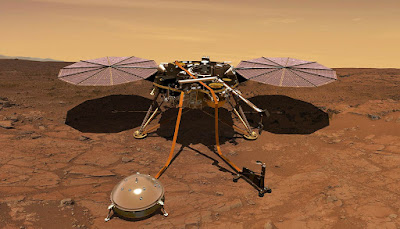TEAM MEASURES MARS FROM CRUST TO CORE
Using information from NASA's InSight Lander on Mars, seismologists have made the first direct dimensions of 3 subsurface limits from the crust to the core of the red planet.
"Eventually it may help us understand worldly development," says Alan Levander, coauthor of a brand-new study released in Geophysical Research Letters.
judi bola terpercaya karier thiago alcantara
While scientists have formerly calculated the density of Mars' crust and the deepness of its core with a variety of models, the InSight information enabled the first direct dimensions, which scientists can use to inspect models and eventually to improve them, Levander says.
"In the lack of plate tectonics on Mars, its very early background is mainly preserved compared to Planet," says finish trainee Sizhuang Deng, the paper's coauthor.
"The deepness estimates of Martian seismic limits can provide indicators to better understand its previous as well as the development and development of terrestrial planets generally."
Finding hints about Mars' interior and the processes that formed it are key objectives for InSight, a robotic lander that touched down in November 2018.
The probe's dome-shaped seismometer allows researchers to pay attention to pass out rumblings inside the planet, in a lot the manner in which a physician might pay attention to a patient's heartbeat with a stethoscope.
Seismometers measure resonances from seismic waves. Such as round ripples that note the spot where a stone disrupted the surface of a fish pond, seismic waves flow through planets, noting the place and dimension of disruptions such as meteor strikes or quakes, which are appropriately called marsquakes on the red planet. InSight's seismometer tape-taped greater than 170 of these from February to September 2019.
Seismic waves also discreetly change as they go through various kinds of shake. Seismologists have examined the patterns in seismographic recordings on Planet for greater than a century and can use them to map the place of oil and gas down payments and a lot deeper strata.
"The traditional way to investigate frameworks beneath Planet is to analyze quake indicates using thick networks of seismic terminals," says Deng. "Mars is a lot much less tectonically energetic, which means it will have much less marsquake occasions compared to Planet. Moreover, with just one seismic terminal on Mars, we cannot utilize techniques that depend on seismic networks."
For the study, Levander, Deng, and Carey Croneis teacher of planet, ecological and worldly sciences, evaluated InSight's 2019 seismology information using a method called ambient sound autocorrelation.
"It uses continuous sound information tape-taped by the solitary seismic terminal on Mars to extract pronounced representation indicates from seismic limits," Deng says.
The first limit Deng and Levander measured is the split in between Mars' crust and mantle almost 22 miles (35 kilometers) beneath the lander.


